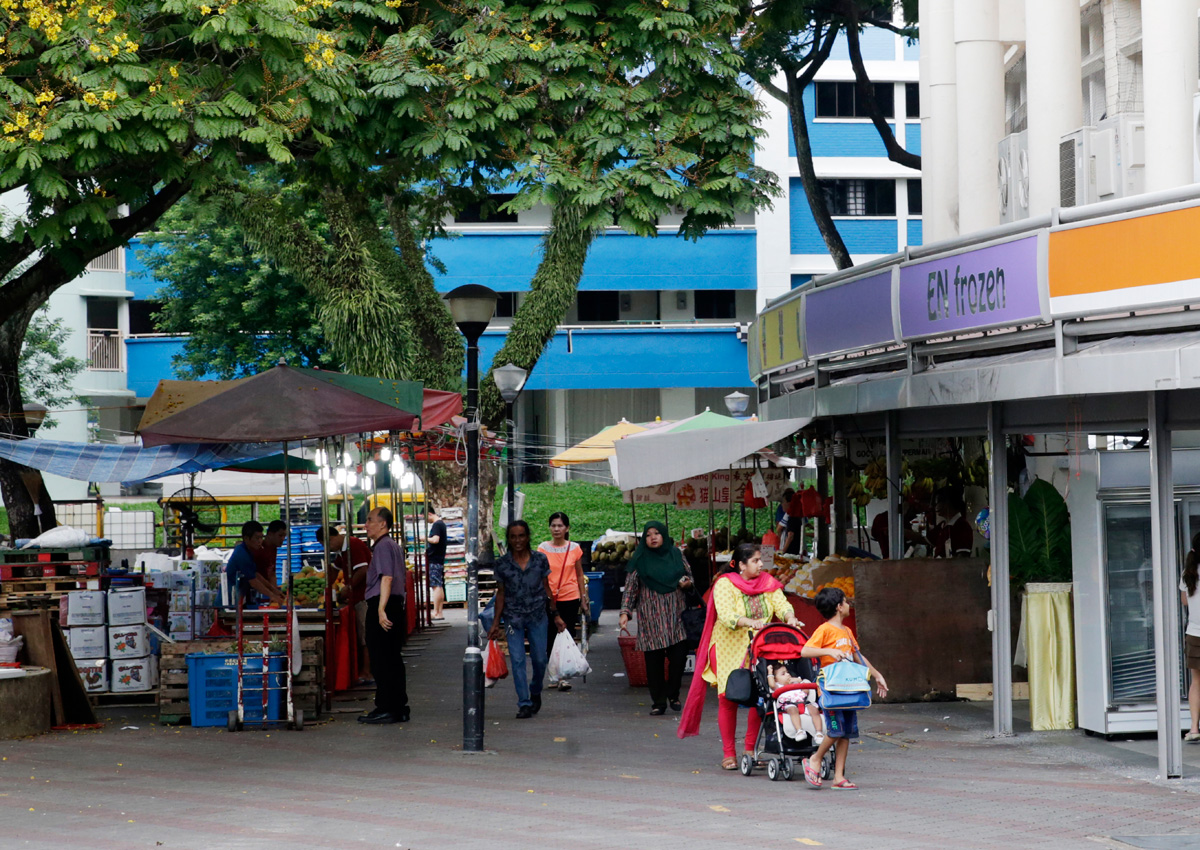Neighbourhood shops may be a familiar aspect of Housing Board life, but many have been grappling with poor business of late and are exploring new ways to keep afloat.
Owners of these heartland businesses cite the sluggish economy and rising competition from neighbourhood malls and e-commerce as some reasons for their struggle.
Mr Yeo Hiang Meng, president of the Federation of Merchants’ Associations, Singapore (FMAS), said footfall at HDB shops has quietened considerably this year.
“It usually picks up after Chinese New Year, but there seems to be fewer people now,” said Mr Yeo, 60, who also chairs the Toa Payoh Central Merchants’ Association.
“(Because of) the (strong) Singapore dollar… many find it cheaper to buy things from abroad and online instead,” added the owner of a jewellery shop in Toa Payoh.
Mr Ho Kim Long, 40, who owns video and CD chain Veegoo, said sales across his four outlets in Ang Mo Kio, Jurong East, Marine Parade and Tampines have dipped by about a third in the past year.
“Meanwhile, my employee salaries and rent are increasing. Things are not looking good.”
Ang Mo Kio Constituency Merchants Association president Peter Lai has noticed more empty shops in his neighbourhood.
“Usually, all of them would be rented out, with people waiting to take over leases before they are over,” said Mr Lai, 65, who is also vice-president of FMAS. “But now, for every 100 shops, about three to five are empty. And they sometimes stay that way for a year.”
There are altogether 14,640 HDB shops, of which 8,500 are sold. The other 6,140 are rental shops, the Housing Board said.
Singapore Polytechnic’s retail lecturer Sarah Lim said HDB shops, just like malls, may face a manpower shortage. “Not many Singaporeans want to work the long and wrong hours,” she said, referring to how these shops usually stay open on weekends and public holidays.
The HDB started the Revitalisation of Shops scheme in 2007 to provide partial funding for upgrading and promotional events.
This was enhanced earlier this week, with the upgrading budget for each shop raised to $35,000 and the co-payment portion for shop owners reduced. New funds to form merchants’ associations and engage consultants for upgrading were also introduced.
Meanwhile, the FMAS organises training and awards to encourage innovation among heartland enterprises. Shops have also devised their own ways to stay in the game.
Ms Pia Chew, 42, who started clothing store Dustbunny Vintage at a Bukit Purmei block five years ago, offers personal styling and tailoring services to add value to her customers’ experience.
She has also turned to social media to reach more people. “My customers find it convenient to look at pictures of my clothes on their phones,” said Ms Chew.
Later this year, close to 400 HDB shops in Tampines could be wired up with Wi-Fi hotspots that allow customers to visit a dedicated online portal to browse for shops and ongoing promotions.
“We want them to come into our neighbourhood and feel like it’s just like a big shopping mall,” said Tampines Merchant Association chairman Kwek Hong Lim, 39.
For all the challenges they face, heartland shops seem set to stay.
In HDB’s latest Sample Household Survey in 2013, 89.9 per cent of respondents said they were satisfied with HDB shops and neighbourhood centres – up from 89.1 per cent in 2008.
Ms Lim said such shops will remain relevant as they “cater to the immediate needs of residents, and shopkeepers know you by name”.
She added: “Don’t underestimate the value of a personal touch. HDB shops have their nostalgic charm – most of us grew up with them and they’re part of our heritage.”
yeosamjo@sph.com.sg

This article was first published on May 12, 2016.
Get a copy of The Straits Times or go to straitstimes.com for more stories.






